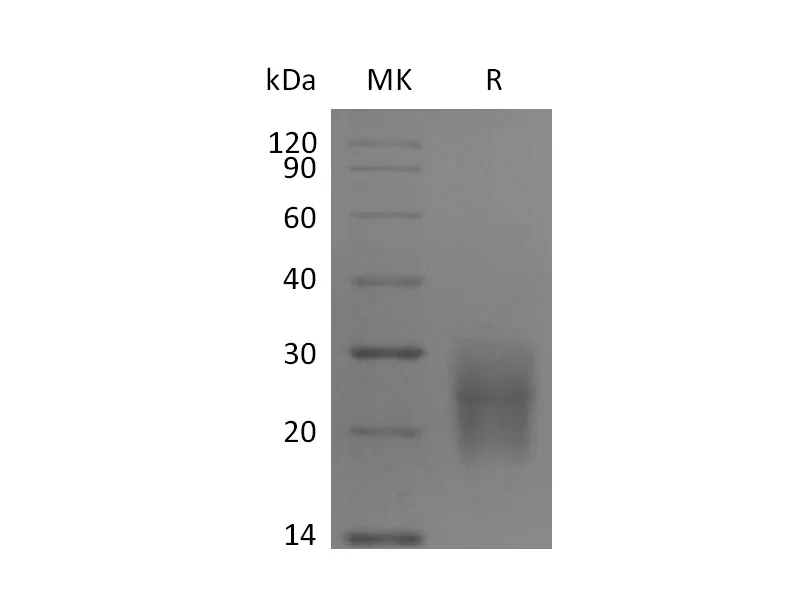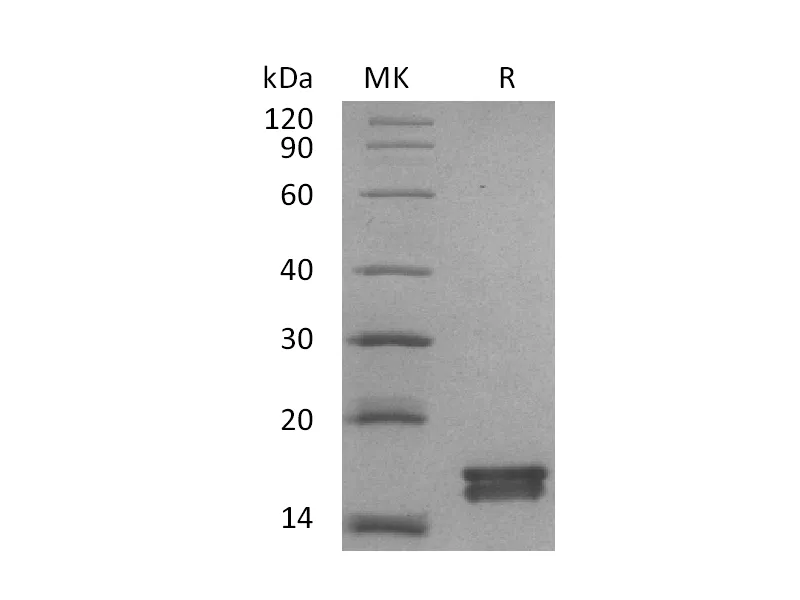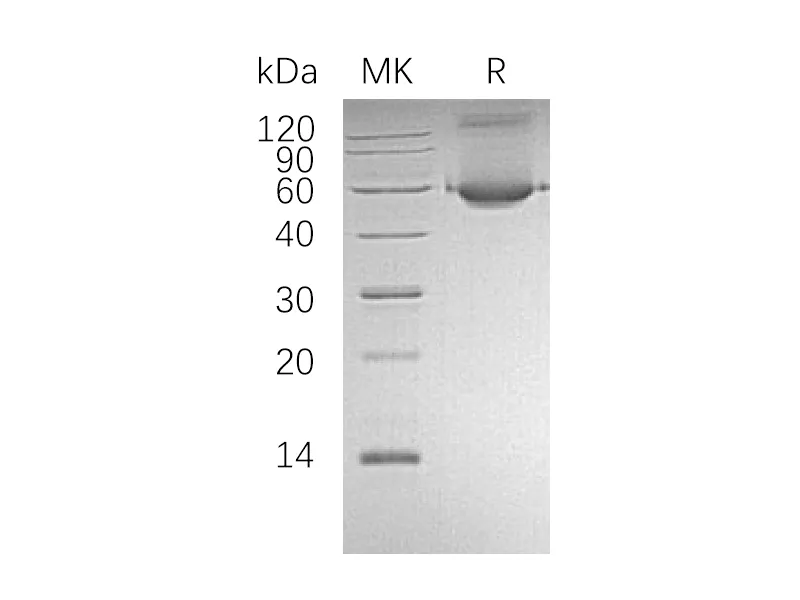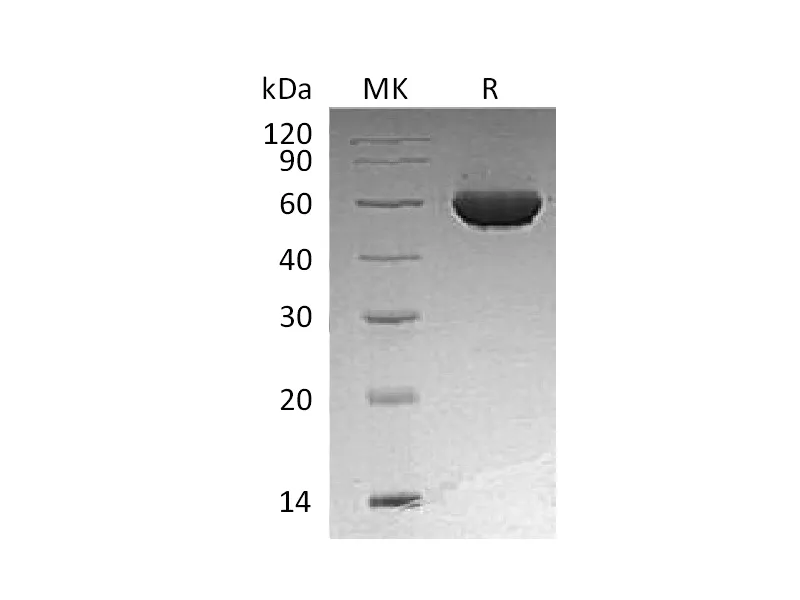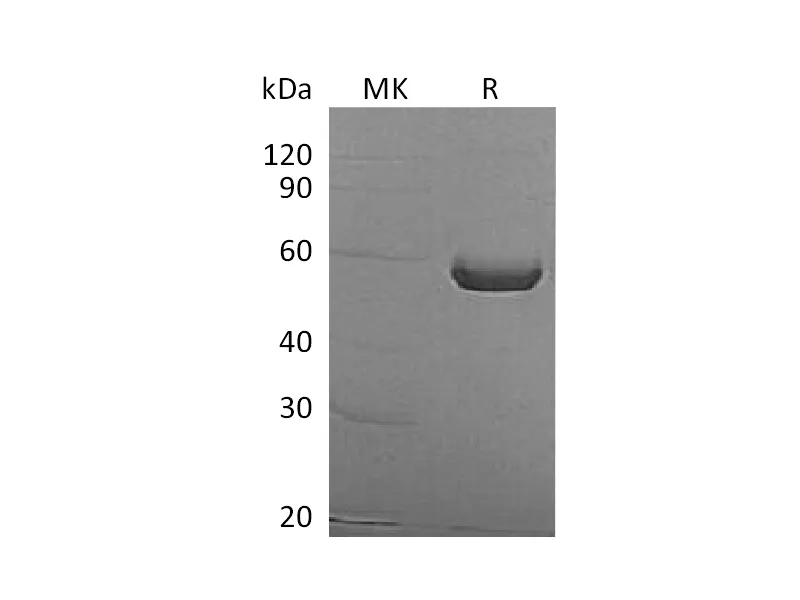| Name | Recombinant Human CD3D (C-6His) |
| Purity | Greater than 95% as determined by reducing SDS-PAGE |
| Endotoxin level | <1 EU/µg as determined by LAL test. |
| Construction | Recombinant Human T-Cell Surface Glycoprotein CD3 Delta/CD3D is produced by our Mammalian expression system and the target gene encoding Phe22-Ala105 is expressed with a 6His tag at the C-terminus. |
| Accession # | P04234 |
| Host | Human Cells |
| Species | Human |
| Predicted Molecular Mass | 10.59 KDa |
| Buffer | Lyophilized from a 0.2 μm filtered solution of PBS, pH 7.4. |
| Form | Lyophilized |
| Shipping | The product is shipped at ambient temperature.Upon receipt, store it immediately at the temperature listed below. |
| Stability&Storage | Store at ≤-70°C, stable for 6 months after receipt.Store at ≤-70°C, stable for 3 months under sterile conditions after opening. Please minimize freeze-thaw cycles. |
| Reconstitution | Always centrifuge tubes before opening.Do not mix by vortex or pipetting.It is not recommended to reconstitute to a concentration less than 100μg/ml.Dissolve the lyophilized protein in distilled water.Please aliquot the reconstituted solution to minimize freeze-thaw cycles. |
Alternative Names
T-Cell Surface Glycoprotein CD3 Delta Chain; T-Cell Receptor T3 Delta Chain; CD3D; T3D
Background
CD3D is a single-pass type I membrane protein which Contains 1 ITAM domain. T cell receptor-CD3 complex (TCR/CD3 complex) is involved in T-cell development and several intracellular signal-transduction pathways. This complex is critical for T-cell development and function, and represents one of the most complex transmembrane receptors. The T cell receptor-CD3 complex is unique in having ten cytoplasmic immunoreceptor tyrosine-based activation motifs (ITAMs). Defects in CD3D are a cause of severe combined immunodeficiency autosomal recessive T-cell-negative/B-cell-positive/NK-cell-positive (T-B+NK+ SCID), which is a genetically and clinically heterogeneous group of rare congenital disorders characterized by impairment of both humoral and cell-mediated immunity, leukopenia, and low or absent antibody levels.
Note
For Research Use Only , Not for Diagnostic Use.

